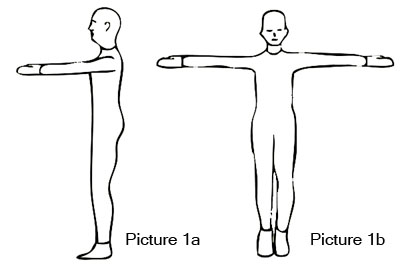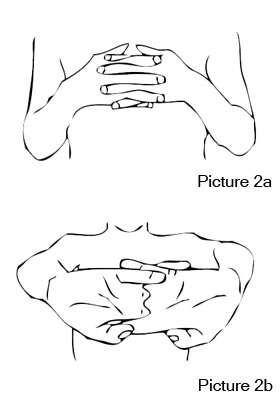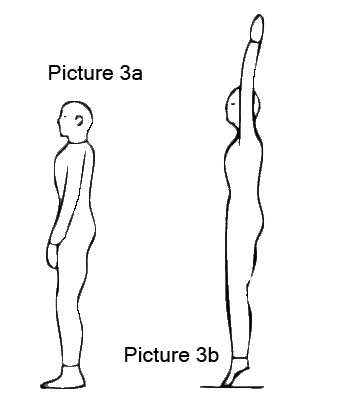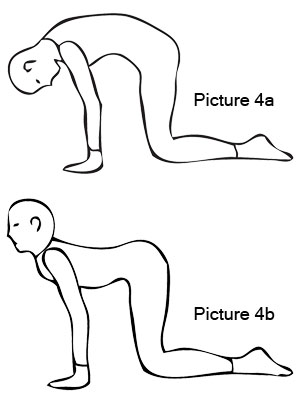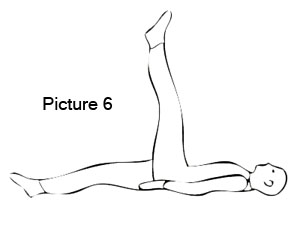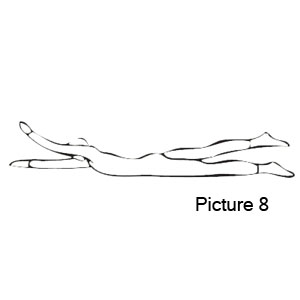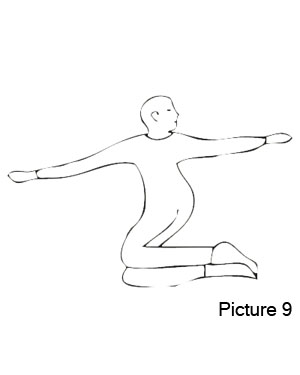Certain exercises develop harmonious coordination of the breathing and bodily movements in an almost playful way and prepare you for more challenging exercises.
These exercises are very helpful for the untrained, for seniors and for people with medical conditions (after consulting their physician or the yoga teacher).
Even without practising other exercises, the given sequence will benefit the body and calm the mind.
Some standing posture exercises are suitable for those needing to sit on a chair instead.
The figure and the description of the exercise is preferably viewed side by side. This is either possible with the desktop version of this website or with the following PDF-file:
Breath-body coordination.pdf

